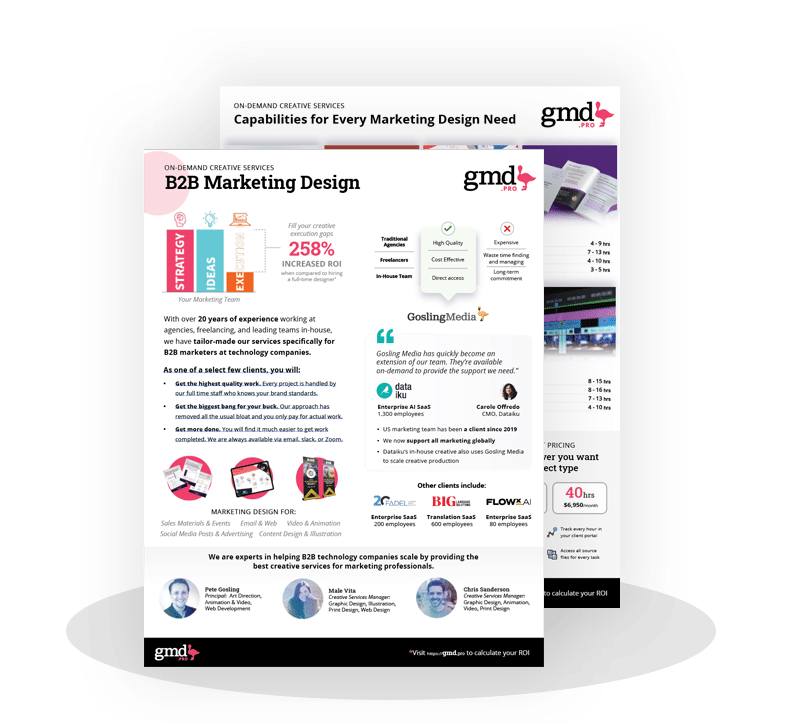Maintaining consistent branding across all marketing channels is essential for building trust and recognition. Studies show that consistent branding can increase revenue by 23%. Here’s how you can ensure your brand stays cohesive:
- Set Clear Standards: Define visual identity (logos, colors, typography), tone, and messaging in a detailed brand guide.
- Organize Assets: Audit current materials and store them in a structured system like a Digital Asset Management (DAM) tool.
- Use Templates: Create templates for social media, emails, presentations, and print materials to ensure uniformity.
- Train Your Team: Conduct workshops and assign brand managers to enforce guidelines.
- Measure Results: Track metrics like asset usage and brand visibility to identify gaps and refine your approach.
Consistency builds trust and makes your brand instantly recognizable, even without a logo. Start by creating a strong brand guide and training your team to follow it.
How to Create Brand Guidelines for Consistent, Easy Marketing
Set Your Brand Standards
Creating clear brand standards is key to maintaining consistency across all platforms. These standards act as the blueprint for everything your team produces, ensuring your brand stays recognizable and reliable.
Break Down Your Brand Elements
Outline the core components of your brand to shape how your audience sees you:
- Visual Identity: Specify logo details, such as minimum size, approved color variations, and how it should appear with or without accompanying text.
-
Color System: Choose 2-3 main colors and additional accent shades. Include the necessary codes for different uses:
Color Type Required Codes Print CMYK, Pantone (PMS) Digital RGB, HEX/Web Brand Use Primary/Secondary designation - Typography: Set clear guidelines for fonts, including which to use for headlines, body text, and other content.
Create Your Brand Guide
Combine these elements into a comprehensive brand guide. As Kyle Eberle, Senior Product Designer at Peacock TV, puts it:
"A style guide provides an identity framework for your brand. It enables the various teams in an organization to tell a consistent story or offer a new feature that’s on-brand. Without a clear guide to unite group efforts and messaging, strategy, and execution won’t be as effective."
Your guide should include:
- Mission Statement: Clarify your target audience and how you want your brand to be perceived.
- Key Messages: Include your main slogans and taglines.
- Visual Guidelines: Explain logo placement, color use, and typography rules.
- Brand Voice: Define your tone and style of communication.
- Usage Examples: Provide real-world examples of how to apply your brand elements.
Dmytro Biliur, a freelance user experience designer, adds:
"A style guide is more than just a set of rules. It is about setting a language for aesthetics that will evolve along with the product. Even after an engagement with a client is over, the style guide serves as a living, growing document to help guide further digital growth efforts."
Make sure this guide is easily accessible to everyone involved, from team members to contractors and vendors. As The Print Shop notes, "Consistency is important in making your brand recognizable and reliable across all marketing platforms".
This guide forms the backbone of all your brand-related efforts moving forward.
Organize Your Brand Materials
Once your brand standards are defined, it’s time to organize your brand assets. This ensures they’re easy to access and consistently used across all your marketing efforts.
Review Current Materials
Start by auditing your existing brand materials. Focus on the following:
Visual Assets
- Different logo variations (e.g., full color, monochrome, reversed)
- Typography files and any associated licenses
- Icon libraries
- Photography collections
- Design templates for various platforms
- Clear usage rules for each type of asset
- Examples showing how to correctly use assets
- Visual "Do and Don’t" examples
- Technical details for different platforms and formats
Use the results of this review to create a well-structured repository for your assets.
Set Up Asset Storage
To maintain consistency, consider implementing a Digital Asset Management (DAM) system. Research indicates that marketers with organized systems are 397% more likely to succeed.
Here’s a suggested hierarchy for structuring your DAM:
| Level | Purpose | Contents |
|---|---|---|
| Top-Level | Team/Department | Marketing, Sales, Design |
| Secondary | Asset Type | Logos, Templates, Photos |
| Tertiary | Categories | Social Media, Print, Web |
| Individual | File Names | logo-primary-fullcolor-v2 |
Carla Sandhu, Global Head of Design Operations at Skyscanner, explains:
"We’ve seen the company and our external partners adopt Frontify instantly. We’ve achieved operational efficiencies in our first few months after launch – we no longer get bombarded with questions about hex codes and branded decks."
File Naming Best Practices
- Stick to consistent formats, such as:
[project-type]-[name]-[version] - Include helpful details like date, campaign, or size
- Use clear version control with numbered updates
Anthony Nguyen, Director of Global Marketing, highlights the benefits of this approach:
"Brandfolder has increased our efficiency because of the usability and ease of use. With a quick and simple search, our international partners can find exactly what they need, when they want it."
sbb-itb-3ff8c64
Create Standard Templates
Standard templates help maintain brand consistency across channels and make production easier.
Design Ready-to-Use Templates
Using your established brand guidelines, create templates that clearly represent your visual identity. Focus on these key marketing materials:
| Marketing Channel | Template Types | Key Elements to Include |
|---|---|---|
| Social Media | Posts, Stories, Covers | Logo placement, proper image dimensions, font styles |
| Newsletters, Campaigns | Header design, CTA buttons, footer layout | |
| Presentations | Sales decks, Webinars | Slide layouts, typography hierarchy, color schemes |
| Print Materials | Brochures, Business Cards | Bleed areas, logo spacing, paper specifications |
These templates should be flexible enough to accommodate different content while ensuring your branding stays consistent. Once the templates are ready, make sure your team knows how to use them effectively.
Use Design Tools
The right design tools make it easier to stick to templates and speed up the creation process.
Key Features for Templates
- Brand color palettes with Pantone codes
- Approved font pairings with proper kerning
- Standard image placeholders with exact dimensions
- Logo variations for light and dark backgrounds
- Locked elements to prevent accidental edits
Best Practices for Managing Templates
- Store templates in a digital asset management system
- Provide clear usage instructions and version control
- Offer versions tailored to different skill levels
- Create responsive layouts for various platforms
- Keep templates updated and document changes
These steps ensure your templates are easy to use and consistently reflect your brand.
Train Your Team
Keeping your marketing materials consistent starts with proper training. Clear instructions and interactive sessions help ensure your brand stays uniform across all platforms.
Hold Brand Training
Brand training sessions teach your team how to use brand assets the right way. Practical, hands-on sessions are especially effective for showing how to maintain consistency. Here are a few training elements you might include:
| Training Component | Purpose | Key Elements |
|---|---|---|
| Onboarding Sessions | Introduce the brand | Brand values, tone, and visual identity |
| Practical Workshops | Teach asset usage | Working with templates, file formats, and dimensions |
| Regular Updates | Keep teams informed | New assets, updates to guidelines, and best practices |
| Documentation Access | Provide easy reference | Access to style guides, templates, and asset libraries |
When your team understands how to use these resources, maintaining consistency becomes much easier.
Assign Brand Managers
After training, appoint brand managers to oversee and enforce these guidelines. They’ll ensure everything stays aligned and keep the materials updated as your brand grows or changes.
Measure Brand Results
To assess how well your brand is performing, start by monitoring consistency and identifying areas where improvements are needed. Studies suggest that maintaining brand consistency can increase revenue by as much as 23%.
Track Brand Metrics
Clear metrics are essential for evaluating how consistently your brand assets are used across various channels. Here are some key areas to focus on:
| Metric Type | What to Measure | Why It Matters |
|---|---|---|
| Asset Usage | Views, downloads, shares | Shows which assets resonate most with users |
| Brand Visibility | Social media mentions, press coverage | Indicates how recognizable your brand is |
| Team Adoption | Guideline compliance rate, feedback | Highlights how well teams align with standards |
| Market Impact | Customer recognition, engagement rates | Demonstrates how effectively your brand connects externally |
Digital asset management (DAM) tools can help by tracking asset usage, such as download frequency, to uncover consistency gaps across your marketing efforts.
"When formal guidelines exist that are enforced, the firms that have them are more than twice as likely to also see a consistent presentation of their brand."
Use these insights to refine your approach and ensure your content aligns with your brand identity.
Update Content Formats
Streamlining content formats can help eliminate confusion and improve your audience’s experience. A survey found that 71% of participants cited market confusion as the biggest consequence of inconsistent branding.
| Format Type | Consistency Check | Implementation Tips |
|---|---|---|
| Social Media | Image dimensions, colors | Use approved templates for each platform |
| Print Materials | Logo placement, typography | Create master files with locked design elements |
| Digital Content | Brand voice, visual style | Develop clear guidelines for each channel |
| Video Assets | Intro/outro sequences, graphics | Standardize motion graphics and animations |
"Your brand is your story, your connection, the truth you weave into the fabric of who your company is, what it believes in, and how it creates something different for its people." – Tracy Leigh Hazzard, CEO, HAZZ DESIGN
Conclusion
Keeping your brand consistent builds trust and fuels growth. Studies show that companies with a consistent brand presentation experience an average 23% boost in revenue. Yet, despite 85% of organizations having brand guidelines, only 30% enforce them consistently.
This gap underscores the importance of having a clear branding strategy. To achieve consistency, focus on documenting brand standards, organizing assets, standardizing templates, and training your team. The Lassonde Entrepreneur Institute puts it perfectly:
"Ultimately, you want your customers to see one of your ads and immediately know it’s from your business, even if your logo or business name is nowhere to be found".
At Gosling Design Studio, we make sure your brand is consistent wherever your audience interacts with it. From graphic design to video content, web presence, and marketing materials, our services help maintain a cohesive brand identity. We align assets with your guidelines while allowing for natural growth as market needs evolve.
With 64% of consumers saying they trust brands that share their values, consistent messaging and visuals are key to building strong, lasting connections. By putting effective brand management practices in place and regularly evaluating their impact, you can create a recognizable brand that stays true to its identity while evolving over time.







